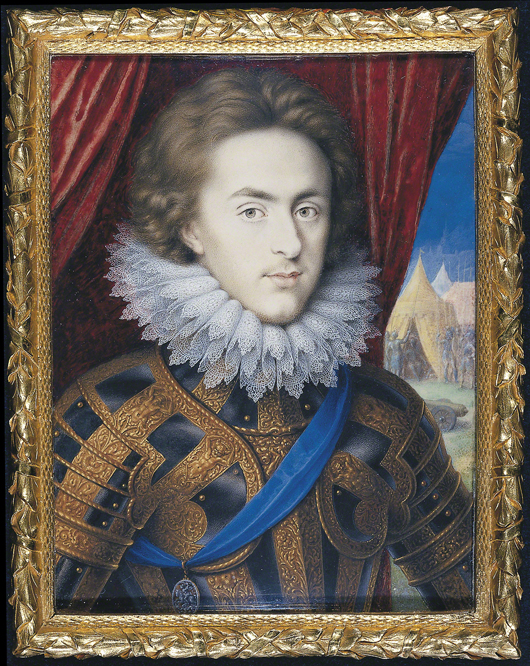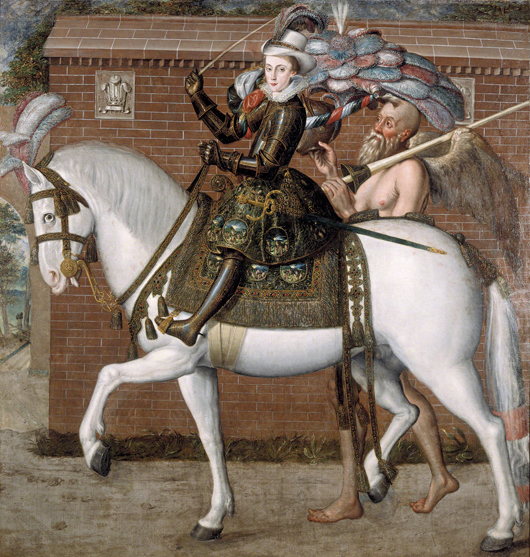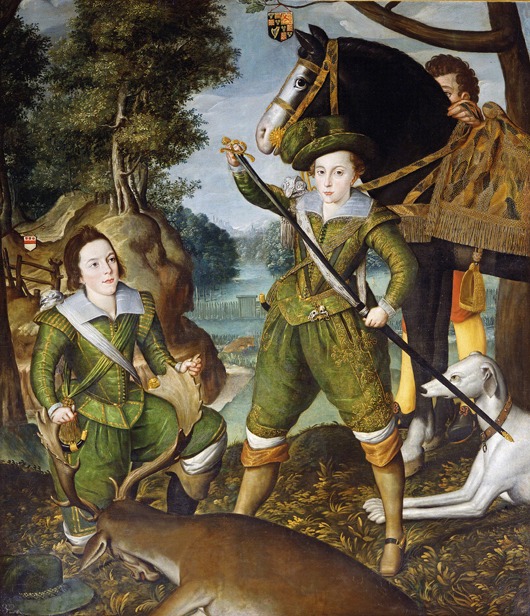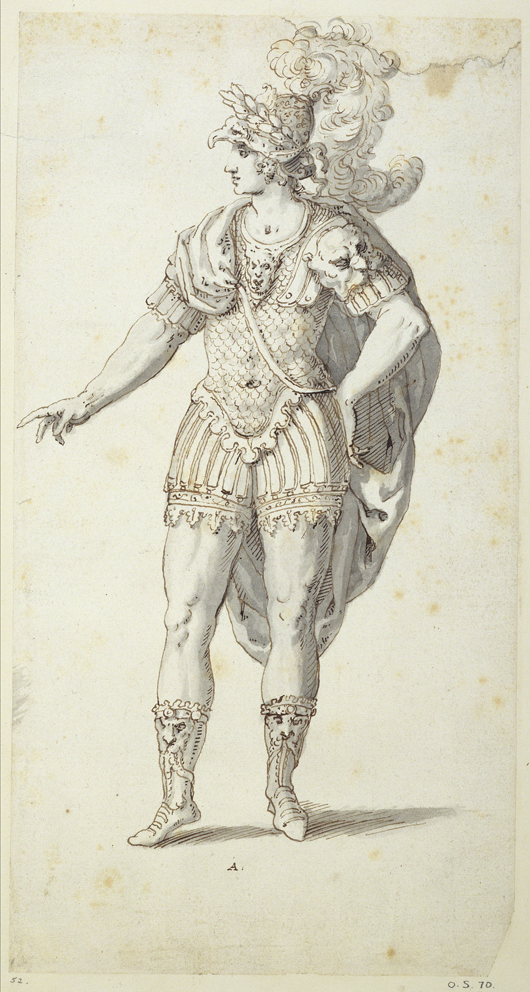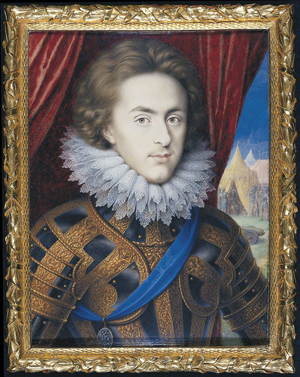
LONDON – The National Portrait Gallery today unveiled the first-ever exhibition on Henry, Prince of Wales (1594-1612). The exhibition focuses on a remarkable period in British history, dominated by a prince whose death at a young age precipitated widespread national grief, and led eventually to the accession to the throne of his younger brother, the doomed King Charles I.
The Lost Prince: The Life and Death of Henry Stuart marks the 400th anniversary of the Prince’s death and, staged during The Queen’s Diamond Jubilee year, assembles for the first time an extraordinary range of objects associated with Henry, including major loans from the Royal Collection.
As well as paintings, a large selection of drawings, miniatures, manuscripts, books, armor and other artefacts associated with the Prince illustrate the remarkable artistic and creative community that developed under his patronage. Gathered from museums and private collections in Britain and abroad, some have never previously been on public display.
The exhibition includes some of the most important works of art and culture produced and collected in the Jacobean period, including portraits by Holbein, Nicholas Hilliard and Isaac Oliver, masque designs by Inigo Jones, and poetry by Ben Jonson in his own hand.
Loans include several extraordinary portraits of Henry by Robert Peake, who created an entirely new kind of royal portraiture for the young Prince, showing him in unusual and dramatic poses, as a man of action.
Brave, handsome, clever, athletic, noble and cultured, Henry embodied all the princely virtues. In his short life he was the focus of great hope and expectation, not just in Britain but in all of Protestant Europe, and his court was the centre of a revival of chivalry and a renaissance in the arts.
This exhibition, which explores Henry’s life and image, and the extraordinary reaction to his death, aims to transform our understanding of this exceptional prince and the time in which he lived.
In November 1612, shortly before his nineteenth birthday, Henry, Prince of Wales, the eldest son of James I of England and VI of Scotland, and Anne of Denmark, died of typhoid fever after a short illness. The nation was struck by grief at the loss of this most promising prince who, as King Henry IX, it was believed would become a king to transform Britain.
Unlike his father James, Henry was seen as militaristic, ardently Protestant and fiercely moral; he was also a precocious patron of the arts, collecting paintings, sculpture and books, commissioning ambitious garden designs and architecture, and performing in elaborate court festivities. He took an active interest in the navy and exploration, sponsoring an expedition to find the Northwest Passage and giving his name to new settlements in Virginia.
He was the first British royal to actively collect European renaissance paintings; he acquired the first collection of Italian renaissance bronzes in England, and brought the first collection of antique coins and medals to England; he also assembled the largest and most important library in the land. His patronage of court masques and festivals, architecture and garden design established his court as a rival to the great princely courts of Europe. Visitors can see examples from these collections as well as exquisite inlaid armour made for Henry and a selection of manuscript letters and writing exercises in Henry’s hand.
Henry’s death inspired an extraordinary stream of poetical and musical tributes, published in nearly 50 contemporary volumes; his lavish funeral procession, including over 2,000 official mourners, was watched by a nation lining the streets, ‘whose streaming eyes made knowen howe much inwardly their harts did bleed.’ The exhibition displays, for the first time in two centuries, the remains of Prince Henry’s funeral effigy with an engraving that shows it lying on his hearse, dressed in his clothes.
The exhibition looks at Henry’s upbringing and education, his court and patronage, his collecting, and finally his illness, death and legacy.
Exhibits have been drawn together from public and private collections, including the Royal Collection, the Devonshire Collection at Chatsworth House, Parham Park, The British Library, the British Museum, the National Maritime Museum, Trinity College, Cambridge and Dulwich Picture Gallery.
The Lost Prince: The Life and Death of Henry Stuart is curated by Catharine MacLeod, Curator of Seventeenth-Century Portraits at the National Portrait Gallery. She has previously curated Painted Ladies: Women at the Court of Charles II. Catharine is also currently co-writing a catalogue raisonné of the works of Sir Peter Lely.
She says: “This exhibition provides a wonderful opportunity to assemble, for the first time since Prince Henry’s death 400 years ago, a group of paintings, drawings and other extraordinary objects, which give us a glimpse into the spectacular and culturally rich life of this exceptional Prince.”
Sandy Nairne, Director of the National Portrait Gallery, London, says: “Henry, Prince of Wales was the focus of extraordinary developments in the visual arts, architecture, music and literature during the Jacobean period, which led to Britain’s establishment as a cultural player on the world stage. On the 400th anniversary of his death, we are delighted to be able to stage this revelatory exhibition.”
Exhibition Details:
The Lost Prince: The Life and Death of Henry Stuart runs through Jan. 13, 2013 at the National Portrait Gallery, London.
Gift Aid ticket prices: (includes voluntary Gift Aid donation of 10% above standard price) Adult £13.00, Concessions £12.00 / £11.00 Standard ticket prices: Adult £11.70, Concessions £10.80 / £10.00
Supported by The Weiss Gallery and individual exhibition supporters
Publication:
A fully illustrated hardback catalog, The Lost Prince: The Life and Death of Henry Stuart, by curator Catharine MacLeod with contributions from Malcolm Smuts, Professor of History at the University of Massachusetts, Boston, and Timothy Wilks, Senior Lecturer in the Visual Arts at Southampton Solent University, is available. Price £30 (hardback), and £25 exclusively at the gallery.
Events:
There is a full program of associated events, including a conference. To book please go to www.npg.org.uk
Hours/Directions:
National Portrait Gallery, St Martin’s Place WC2H 0HE, opening hours Monday, Tuesday, Wednesday, Saturday, Sunday: 10am – 6pm (Gallery closure commences at 5.50pm) Late Opening: Thursday, Friday: 10am – 9pm (Gallery closure commences at 8.50pm) Nearest Underground: Leicester Square/Charing Cross General information: 0207 306 0055 Recorded information: 020 7312 2463 Website/Tickets: www.npg.org.uk
# # #
ADDITIONAL IMAGES OF NOTE
